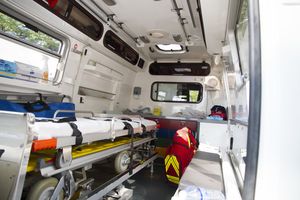
EN 1789 serves as the basis for the design, testing and equipping of ambulances in Europe. By way of a reference in Annex XI of the EU Framework Directive 2007/46/EC (see also Regulation (EU) 214/2014), EN 1789 has acquired binding force in Europe for the road licensing of ambulances (patient's compartment).
The standard serves as the basis for licensing and the associated testing of the patient's compartment. It must serve as a reliable interface between conversion companies, operators and the concerns of occupational safety and health. Owing to the particular conditions of use in the vehicle, ambulance service employees are exposed to a significantly increased risk of accident – and must nevertheless be able to work safely during deployments.
A range of legal sources support or require the safe design and equipping of the patient's compartment in ambulances:
Based on the results of several workshops conducted with operators of ambulance services, KAN became involved in European standardization in this area in 2019, and represents OSH concerns during the process of updating of the standard. This concerns aspects such as the following:
Harmonization of design requirements for vehicle equipment is complex, since the ambulance services in Europe differ in their structure and operate under different conditions. Moreover, the traditional framework of occupational health and safety legislation is limited in its applicability to vehicles used on public roads. For example, this area lies outside the scope of the German Ordinance on workplaces (ArbStättV), which can be applied only by analogy. In contrast to traditional product standardization, no requirements for EN 1789 can be derived from relevant European product safety directives under the New Approach.
The risk assessment required by the Ordinance on industrial safety and health (BetrSichV) when work equipment is used serves as an important basis for occupational safety in this context. A danger exists however that in practice, smaller ambulance service operators in particular will overlook important aspects of the very complex risk assessment and will thus be unable to implement occupational safety and health in full.
For this reason, KAN is calling upon the German Social Accident Insurance Institutions to formulate a DGUV Rule to support ambulance services in the procurement of safe vehicles.
Do you have any questions on this topic, or need support? If so, please contact us.